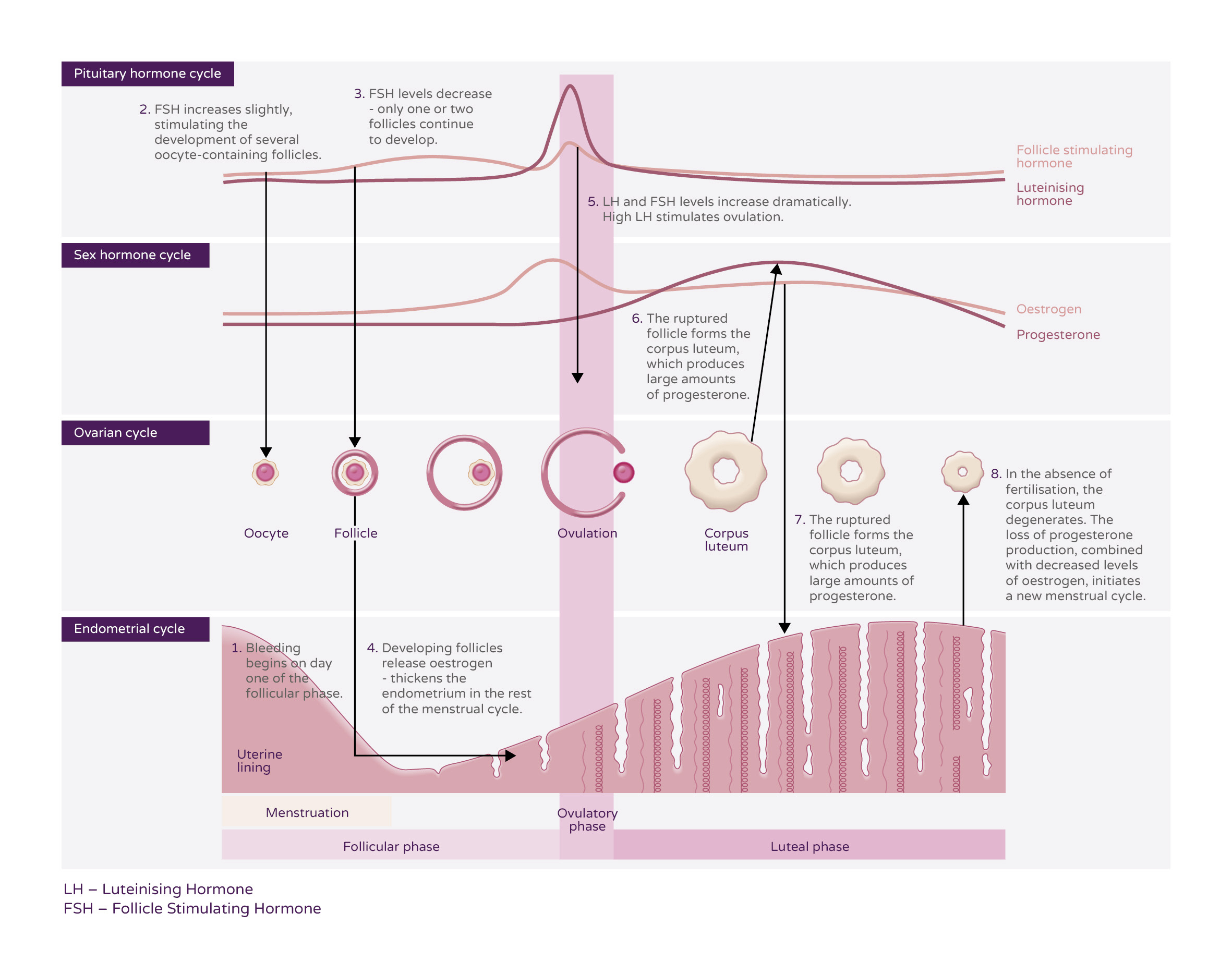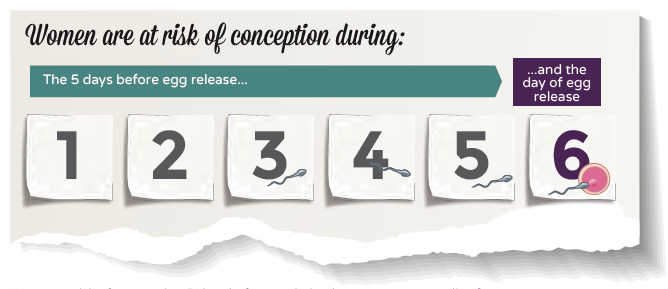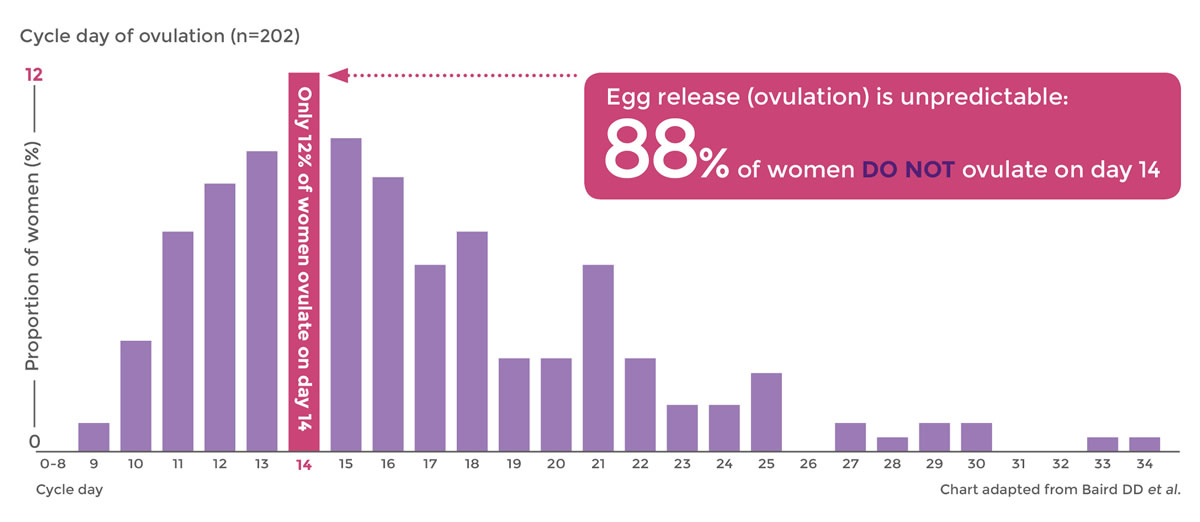The follicular phase (stages 1-4 on the diagram below)
The follicular phase starts on the first day of menstruation and ends with ovulation.1 Prompted by the hypothalamus, the pituitary gland releases follicle stimulating hormone (FSH).2 This hormone stimulates the ovary to produce several follicles (tiny nodules or cysts), on the surface.1 Each follicle houses an immature egg.1 Usually, only one follicle will deliver an egg, while the others die.1 The growth of the follicles stimulates the endometrium to thicken in preparation for possible pregnancy.1
The ovulatory phase (stage 5 on the diagram below)
Ovulation is the release of a mature egg from the ovary’s surface in response to rising levels of luteinising hormone (LH) and FSH.1 When the LH reaches a peak it triggers the rupture of the developing follicle to release the mature egg: ovulation; with no LH surge, ovulation does not occur.1 The released egg is funnelled into the fallopian tube and towards the uterus by waves of small, hair-like projections. The life span of the typical egg is only around 24 hours.3 Unless it meets a sperm during this time, it will die.
The luteal phase (stages 6-8 on the diagram below)
Upon the release of the ovum, the ruptured follicle stays on the surface of the ovary. The follicle transforms into a structure known as the corpus luteum, which releases progesterone and small amounts of oestrogen.1,2 The thickened lining of the uterus is maintained and waits for a fertilised ovum to implant.1 If this happens the implanted ovum will start to produce human chorionic gonadotropin, detectable in a urine test for pregnancy.4 If pregnancy doesn’t happen, the corpus luteum regresses, usually around day 22 in a 28-day cycle.1 The drop in progesterone levels causes the endometrium to break down and menstruation begins again.1










